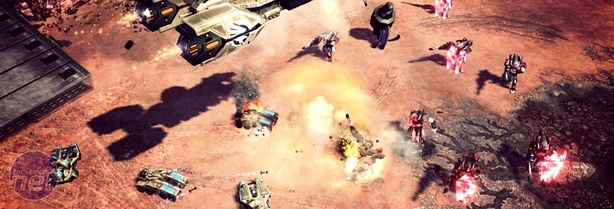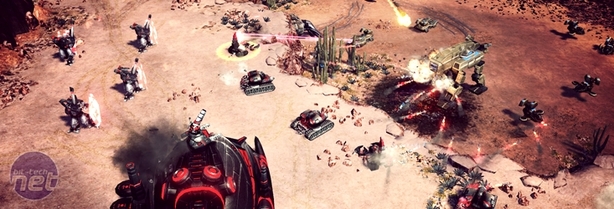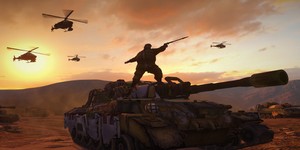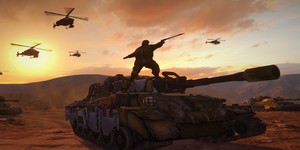
Casual and Conquer
As we mentioned before though, Electronic Arts isn’t just changing things in the singleplayer campaign either. It isn’t just as simple as throwing out the static cameras and camp uniforms in favour of CGI sets and cinematic story-telling.In fact, there’s not even a distinct difference between the singleplayer and multiplayer campaigns any more. The reason that the game requires a constant internet connection is because there’s a new persistent RPG system built into the game, which appears to be heavily influenced by the likes of Dawn of War 2.
It isn’t just an anti-piracy measure, you see – it’s a feature that lets you level up and unlock new units across all modes of play. If you’re having trouble with a singleplayer level you can hop online and play a few matches to help unlock the next tier of tanks, or vice versa.
And, though there’s been a lot of uproar lately about the constant ‘net requirement, we fail to see why it’s so bad for most gamers. The days of dial-up and paying by the minute are a distant memory for most people and, as long as the system is as transparent and lagless as we hope, it shouldn’t function very differently from a good MMO. Most people have their PCs constantly online when they play anyway...but we digress.
Back on topic, one of the biggest changes to the way that Command and Conquer 4 will play compared to other games in the series is the introduction of a new class-based divide across available tech. The fine details are still being nailed down as the dev team tinkers with the final format, but from what we saw the first thing that players do in each and every match is choose a class that dictates the entire way they play.
There are three classes; Assault, Defence and Support and which one you choose will greatly affect the tactics you’ll be able to use. The assault class specialises in heavy armour and fierce firepower obviously, but you’ve got to make the usual trade-off of manoeuvrability to get that added oomph. In the current build there are no aircraft at all in the Assault class, for example.
Support meanwhile is the most flexible of the classes, but it doesn’t really excel in any particular type of battle. All the aircraft and healing or capture units go in the support class – but if you choose it then you’ll have to find a way to do without the protective turrets afforded by the Defense class.
You can change classes admittedly (though EA wasn’t clear on what the penalty might be for that), just in case you find you’re unable to get past the enemy lines without something big and heavy like the Mastodon – one of GDI’s new mega units. It basically looks like an AT-AT from Star Wars, but it fires homing missiles and isn’t easily defeated by children in bear costumes.
Bloody Ewoks – they’ll get their comeuppance someday!
The decision to divide the entire tech tree for each side into three separate classes is a huge gameplay change, obviously – and it’s one we’re still a little unconvinced about, if we’re honest. EA seems to be hoping that the class division will change the way that multiplayer games (which are mostly focused on 5v5 games) work and force players to co-operate in order to win a match.
We on the other hand aren’t so sure that anybody can rely on gamers working together just because the design of the game forces them too. Team Fortress 2 has mutually supportive classes too, but unless you’re playing with friends or professionally then it’s likely you’ll just end up doing your own thing in any given match.

MSI MPG Velox 100R Chassis Review
October 14 2021 | 15:04











Want to comment? Please log in.